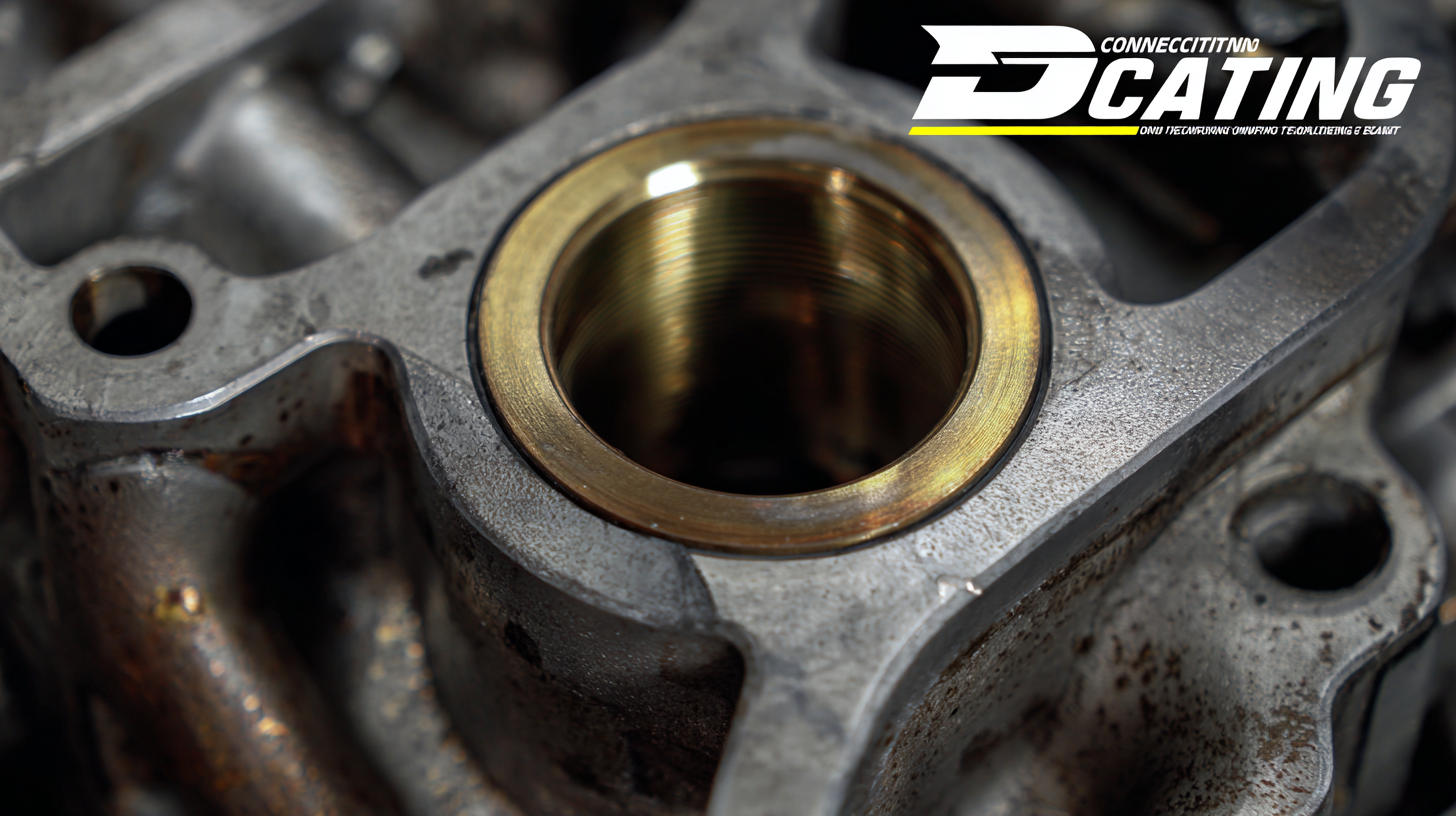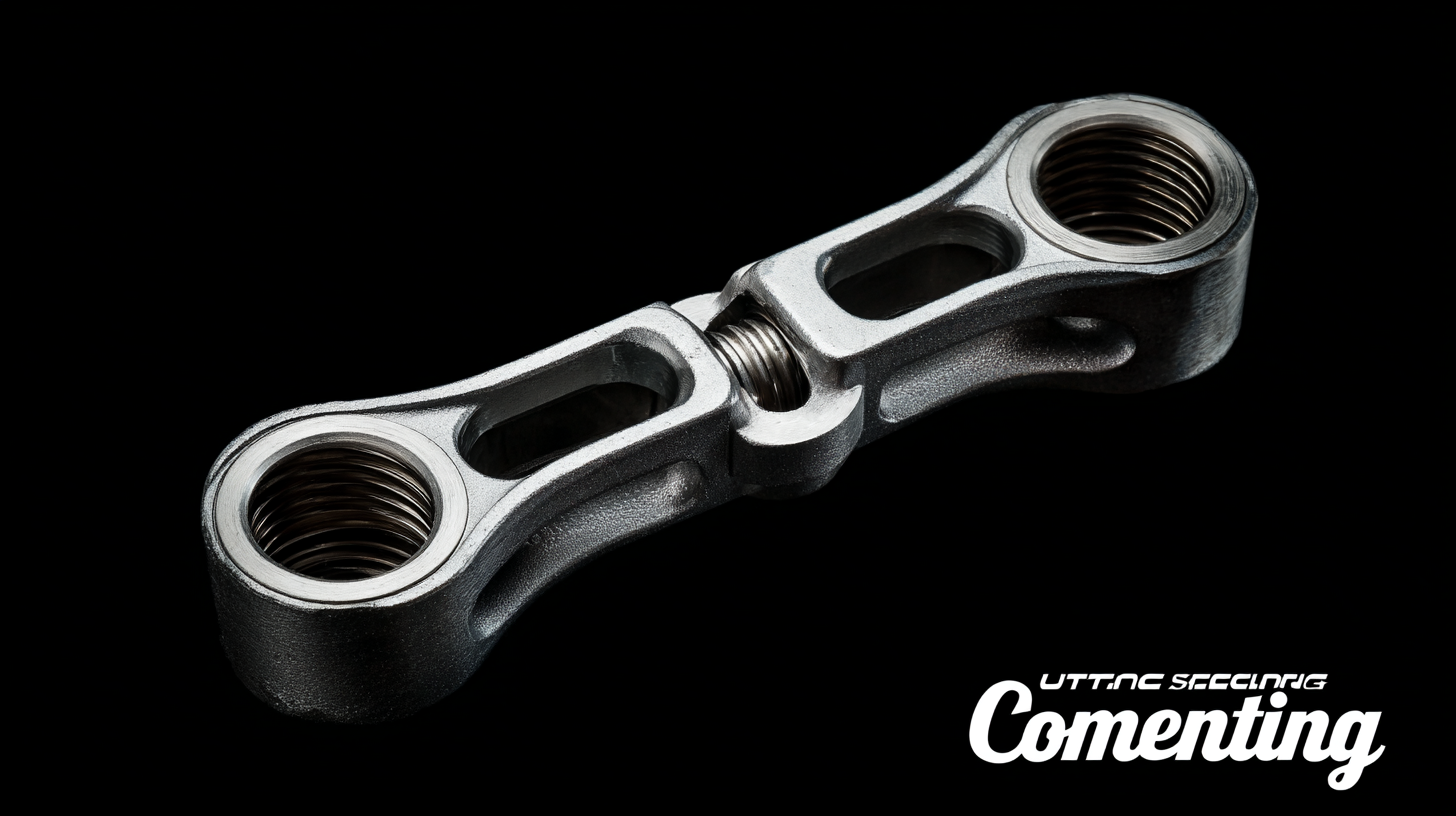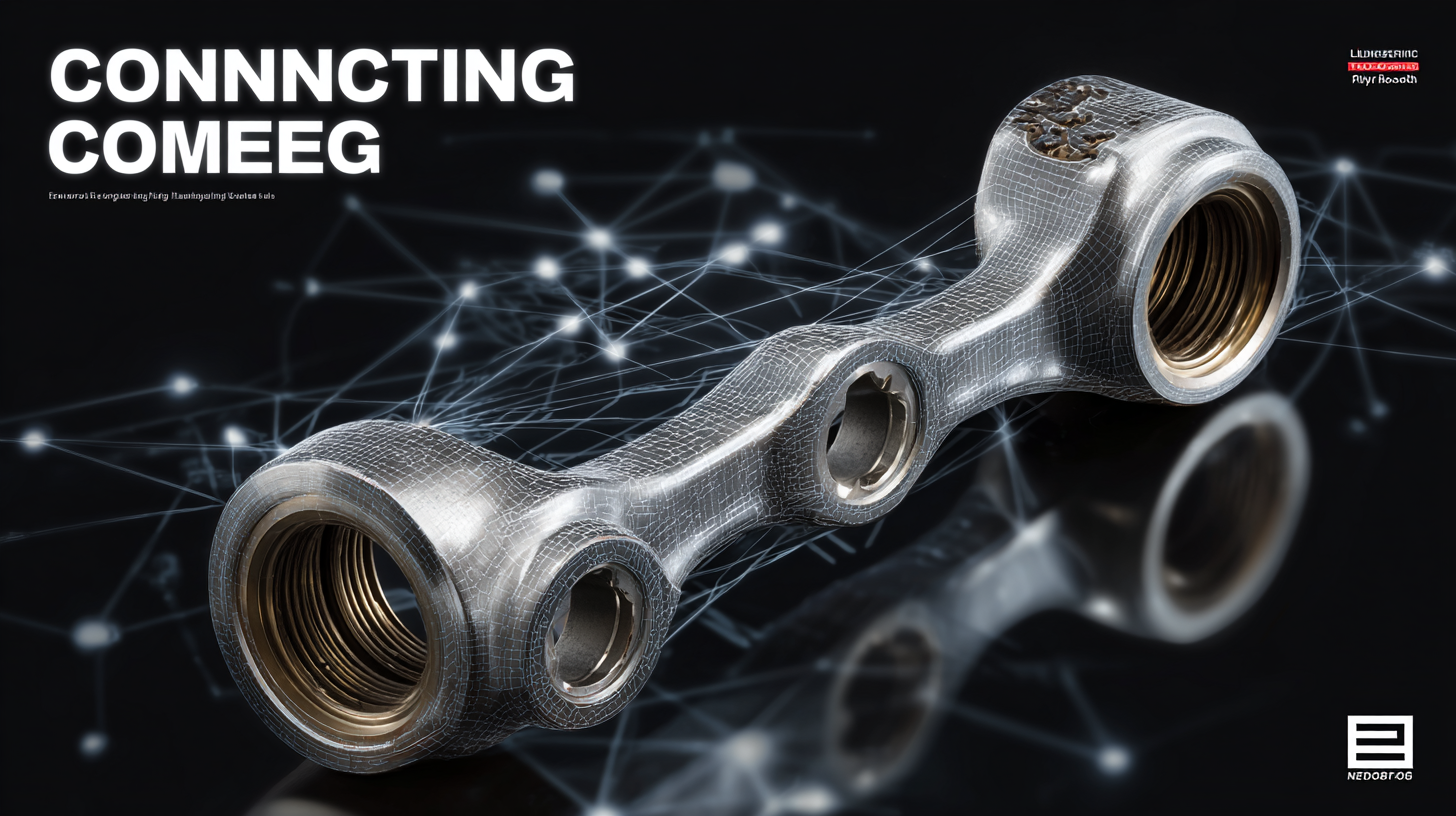 +86 13794985240
+86 13794985240
Leave Your Message
-
 CONTACT NUMBER
CONTACT NUMBER -
 CONTACT NUMBER
CONTACT NUMBER -
 CONTACT NUMBER
CONTACT NUMBER



In the ever-evolving automotive industry, optimizing engine performance is a paramount goal for manufacturers and performance enthusiasts alike. A critical component in achieving this is the connecting rod, which plays a vital role in converting linear motion to rotational motion within the engine. According to a recent report by MarketsandMarkets, the global connecting rods market is projected to reach $1.2 billion by 2025, driven by the demand for enhanced engine efficiency and power output. Selecting the best connecting rod not only contributes significantly to the overall performance but also affects aspects such as durability, weight, and vibration control. With the increasing focus on performance and emissions regulations, understanding the key factors in connecting rod selection can empower engineers and builders to make informed decisions that lead to optimal engine performance, echoing the standards set by leading Chinese factories that deliver superior products globally.

When it comes to engine performance, the connecting rod is a crucial yet often overlooked component. The material used for connecting rods significantly influences both the longevity of the engine and its overall performance. Common materials include steel, aluminum, and forged alloy; each offers distinct advantages and disadvantages. For instance, steel rods tend to be more durable and can handle higher stress levels, making them ideal for high-performance engines. On the other hand, aluminum rods are lighter, which can improve engine efficiency and response times, although they may not last as long under extreme conditions.
**Tip:** When selecting connecting rods, consider the engine's intended use. If you're racing or planning to push your engine to its limits, opt for forged steel rods for their strength and durability. Conversely, for a more casual driving experience, lightweight aluminum rods may enhance responsiveness without compromising much on performance.
**Tip:** Pay attention to the manufacturing process of the connecting rods. Forged rods generally have superior grain structure compared to cast rods, providing enhanced strength and reducing the risk of failure under load. Investing in high-quality, well-manufactured rods can ensure your engine performs at its best in the long run.
| Material | Weight (g) | Strength (MPa) | Fatigue Limit (MPa) | Cost ($) |
|---|---|---|---|---|
| Aluminum Alloy | 500 | 300 | 150 | 50 |
| Steel Alloy | 600 | 500 | 300 | 70 |
| Titanium Alloy | 400 | 900 | 700 | 150 |
| Carbon Fiber | 300 | 700 | 400 | 200 |
The geometry of connecting rods plays a critical role in determining the overall performance and efficiency of an engine. When it comes to engine design, factors such as rod length, width, and angles can significantly impact how effectively power is transferred from the piston to the crankshaft. For instance, longer connecting rods often lead to a more favorable angle during the piston’s stroke, which can result in smoother motion and reduced side loading on the piston. This optimization not only enhances the durability of engine components but also improves combustion efficiency, ultimately elevating power output.
Moreover, the rigidity and weight of the connecting rod are equally important when considering engine dynamics. A well-designed rod will allow for precision movement, minimizing flexing and distortion under high-load conditions. This rigidity combined with an appropriate weight ensures that the engine can rev freely, providing a responsive driving experience without compromising efficiency. Different materials, such as aluminum and titanium, further influence the connecting rod's performance characteristics, enabling engineers to tailor rod geometry for specific applications, whether it be for everyday vehicles or high-performance racing engines. These considerations underline the significance of connecting rod geometry in achieving optimal engine performance.
When selecting connecting rods for your engine, evaluating their weight is a crucial factor that directly impacts performance and durability. Lighter rods can lead to increased RPM capabilities and quicker throttle response, enhancing the overall efficiency of the engine. This is particularly beneficial in high-performance applications, where every ounce counts, and faster acceleration can significantly improve performance on the track. However, it's essential to strike a balance; overly lightweight rods might sacrifice strength and reliability under extreme conditions, leading to potential engine failure.

On the other hand, heavier connecting rods often come with increased durability. They can withstand higher stress and provide stability in extreme environments, such as racing or heavy-duty applications. This added weight can help dampen vibrations and distribute loads more evenly, which contributes to overall engine longevity.
Choosing the right weight for connecting rods requires careful consideration of your specific use case, engine setup, and power goals. Ultimately, optimizing the weight of connecting rods is about finding that sweet spot between performance enhancement and ensuring long-term reliability.
 When it comes to optimizing engine performance, the design of the connecting rod plays a crucial role in reducing friction and enhancing fuel economy. A well-designed connecting rod minimizes weight while maintaining strength, allowing the engine to operate more efficiently. Lightweight materials, such as forged aluminum and advanced composites, can significantly reduce the overall mass, leading to less inertia and improved throttle response. Additionally, the shape and geometry of the connecting rod can influence how stress is distributed, which in turn affects the engine's overall performance.
When it comes to optimizing engine performance, the design of the connecting rod plays a crucial role in reducing friction and enhancing fuel economy. A well-designed connecting rod minimizes weight while maintaining strength, allowing the engine to operate more efficiently. Lightweight materials, such as forged aluminum and advanced composites, can significantly reduce the overall mass, leading to less inertia and improved throttle response. Additionally, the shape and geometry of the connecting rod can influence how stress is distributed, which in turn affects the engine's overall performance.
Tips: When selecting connecting rods, consider the material and design that best suits your engine's specifications and performance goals. Ensure that the rods are properly aligned and have minimal play to further reduce friction. Regular maintenance and inspection of the connecting rods can also help identify any potential wear that could compromise fuel economy.
Another important aspect is the surface finish of the connecting rods. A smoother surface reduces friction between the rod and the crankshaft, which can lead to more efficient performance. Furthermore, adopting advanced coatings can provide additional protection against wear and tear, extending the life of the engine components.
Tips: Look for connecting rods with specialized coatings, such as ceramic or friction-reducing treatments, to enhance performance. If you're focused on maximizing fuel economy, ensure that the connecting rods you choose are engineered for low-friction applications.
When it comes to enhancing your engine's performance, one critical decision lies in the choice between aftermarket and OEM connecting rods. OEM (Original Equipment Manufacturer) rods are designed specifically for your vehicle model, ensuring a precise fit and reliable performance. They undergo rigorous testing and adhere to standards set by the manufacturer, which translates to dependability and longevity. However, they often come with a higher price tag and may not offer the same performance enhancements as aftermarket options.
On the other hand, aftermarket connecting rods provide a range of choices tailored for performance enthusiasts. These rods are typically constructed from advanced materials and designed to withstand high-stress applications, making them an appealing option for modified engines. They can also come in various sizes and weights, allowing for potential weight reduction and improved reciprocating mass. However, it's important to consider factors such as compatibility, quality, and manufacturer reputation, as not all aftermarket products fulfill their promises. Conducting thorough research and weighing the pros and cons will lead you to the best choice for your engine’s unique performance needs.
This chart compares the performance ratings of OEM and aftermarket connecting rods. As seen, aftermarket connecting rods generally receive a higher performance rating, suggesting they may offer better optimization for engine performance.
